Blueair Blue Max 3250i air purifier review – 'a brilliant all-rounder'
Our Blueair Blue Max 3250i Air Purifier review tests out this stylish design and finds it's a brilliant all-rounder at a relatively affordable price point

The Blueair Blue Max 3250i air purifier is a brilliant all-rounder that offers super-responsive performance, stylish good looks, and Wi-Fi connectivity that enables the use of voice commands. Quiet, energy-efficient, and portable, this relatively affordable air purifier is a great buy.
-
+
Excellent performance with fast response times
-
+
Removal of 99.97% of airborne particles down to 0.1 micron in size
-
+
Auto mode
-
+
Quiet operation
-
+
Energy efficient
-
+
Smart App connectivity compatible with Amazon Alexa or Google Assistant
-
+
Light and relatively compact
-
-
On-board controls could be easier to use
-
-
No timer
-
-
Not recommended for use in spaces over 48m2
Why you can trust Ideal Home

Quick Menu
Specifications
How I tested
1. Assembly/set up
2. Design
3. Performance
4. Ease of use
5. Noise levels
6. Portability
7. Energy use
8. Filter replacement
Verdict
Our Blueair Blue Max 3250i air purifier review puts one of the popular air quality brand's newest models through its paces to see how it compares to the best air purifiers the Ideal Home team has tested.
Founded in Sweden, Blueair is part of the Unilever family of brands, and now sells air purifiers in over 60 countries, with a large product range that includes the bestselling Blue 3210 air purifier.
The 3250i is a new and improved upgrade that, in comparison to the 3210, now offers Wi-Fi connectivity that enables you to access a wider range of air quality data via the Blueair App, as well was the ability to pair the air purifier with Amazon Alexa or Google Assistant if you prefer to use voice activated commands.
The Blue Max 3250i also offers improved filtration compared to the 3210. Blueair says it has 'maximized the area of the air filter and improved hole patterns for better performance that offers a higher Clean Air Delivery Rate (CADR) to filter out more smoke, dust and pollen in cubic feet per minute'.
As opposed to the 3210's 163 m³/h CADR for pollen, 181 m³/h CADR for dust, and 210 m³/h CADR for smoke, the Blue Max 3250i now delivers a 239 m³/h CADR for all of these particulates, and its slightly larger design means it can purify a larger space (48m2 compared to the 3210's 41m2).
Unlike many air purifiers that only promise filtration of 99.97% of 0.3 micron air pollutants, the Blue Max 3250i also promises to remove 99.97% of airborne particles down to 0.1 micron in size. I put it to the test to see how it performed in practice.
Blueair Blue Max 3250i Air Purifier review
Specifications
- Recommended room size: 48m2
- Air change per hour: 2 per hour based on recommended room size
- CADR: pollen 239 m³/h, dust 239 m³/h, smoke 239 m³/h
- Noise levels: 18-46dB
- Filter type: 3-Stage Pre-Filter, HEPASilent Filter with carbon sheet and activated coconut shell carbon
- Dimensions: H48 x W27 x D27cm
- Weight: 3.39kg
- Wattage: 2.5-20W
- Smart App connectivity: Yes
- Timer: No
- Auto mode: Yes
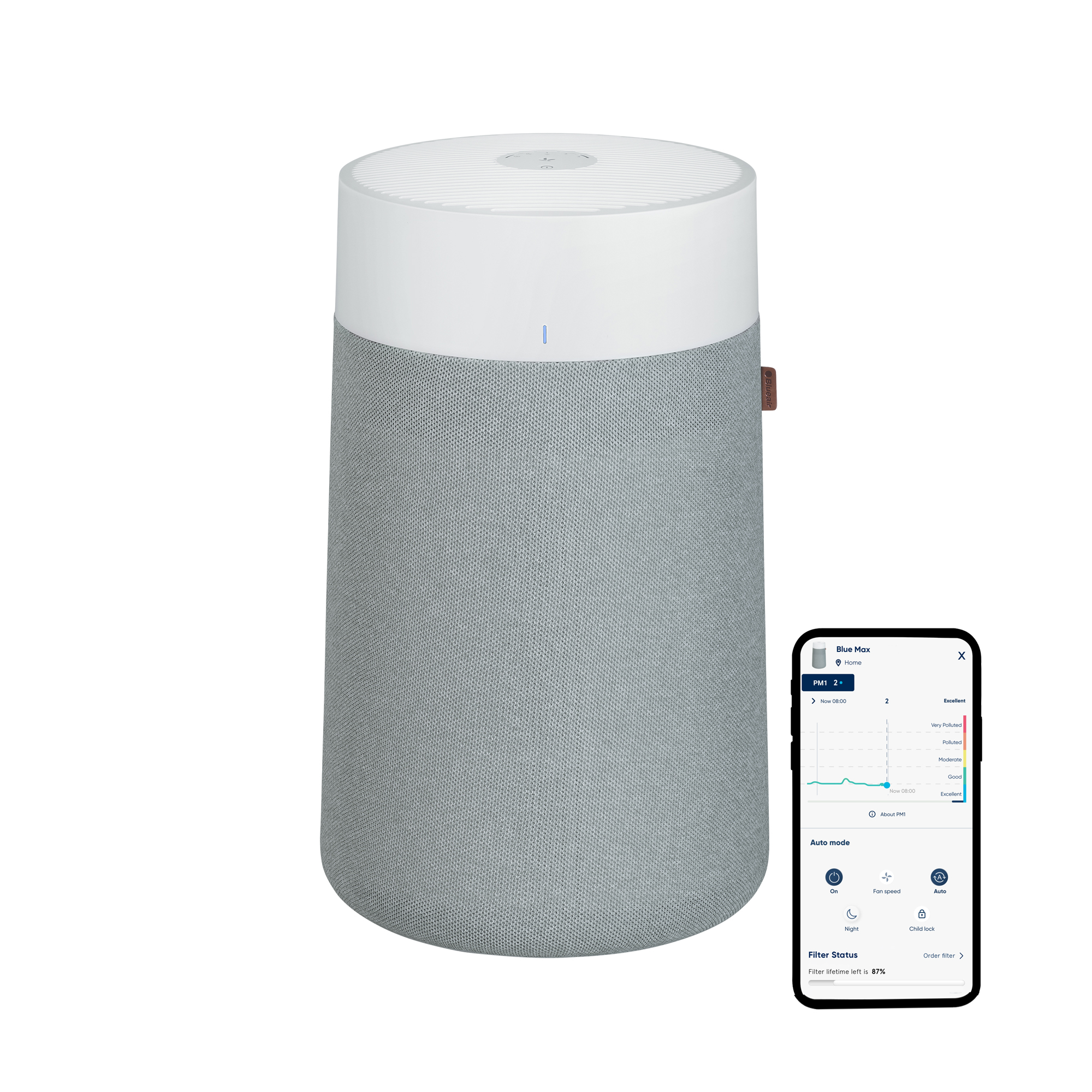

How I tested

I'm Amy, one of the Ideal Home team's Ecommerce Editors. My job involves putting all manner of products through their paces to find the best recommendations for our readers. I've tested multiple products that promise to improve the air quality in our homes and deliver indoor climate control, including the best dehumidifiers, best fans and best portable air conditioners on the market. I tested the Blueair Blue Max 3250i Air Purifier in my own home to see how it coped with everyday decreases in air quality caused by smoke, VOCs, cooking fumes, and dust.
Assembly and set up
The good news is that there's very little assembly needed with the Blueair Blue Max 3250i Air Purifier. Simply unbox it and it's ready to use.
Sign up to our newsletter for style inspiration, real homes, project and garden advice and shopping know-how
You can download the Blueair App if you want to make the most of the air purifier's Smart features, or connect it to Amazon Alexa or Google Assistant if you prefer to use voice activated commands.
However, the Blue Max 3250i can also be operated via the on-board controls on the top of the unit with only a little sacrifice in functionality.
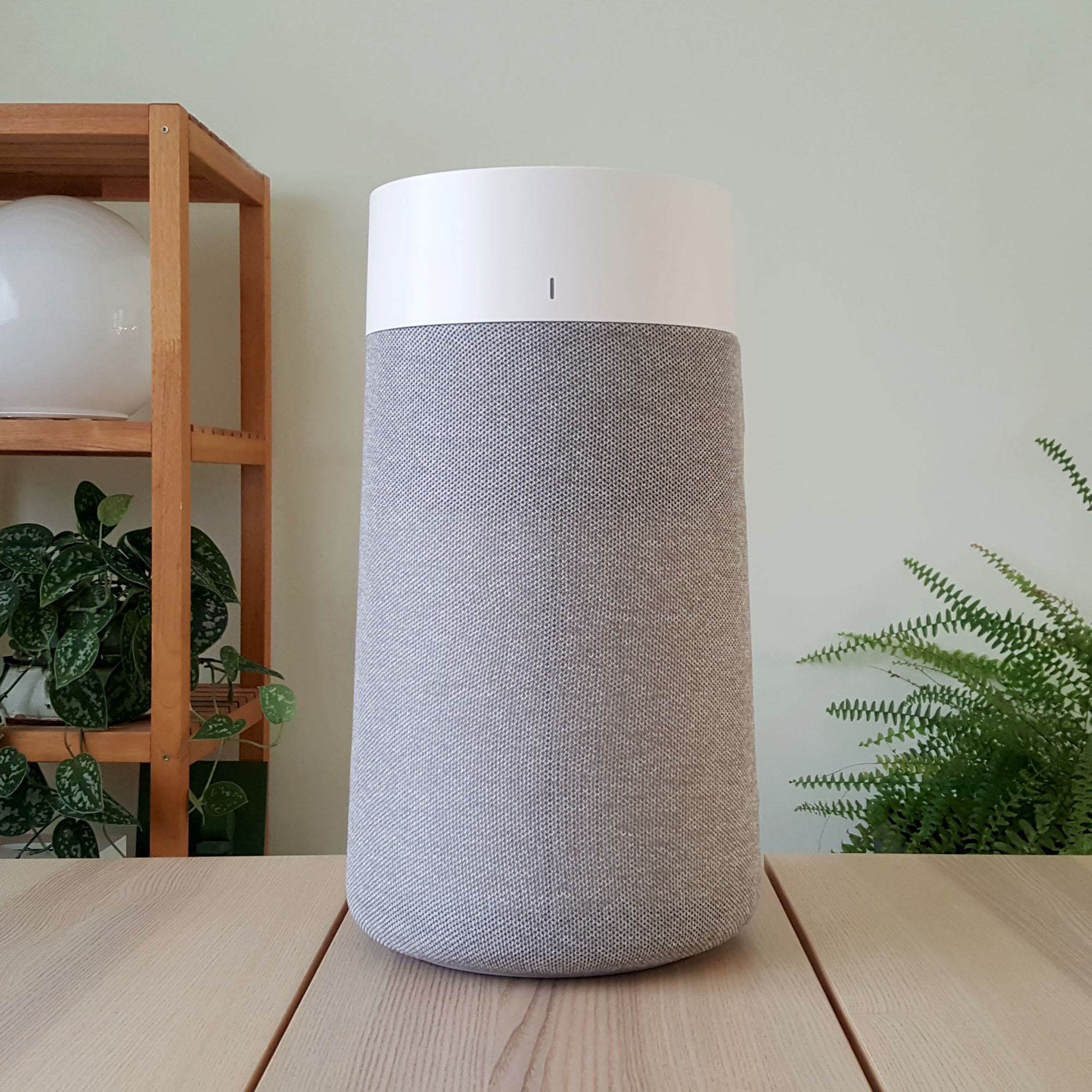
Design
Stylish and minimalist, the Blueair Blue Max 3250i Air Purifier looks a lot more attractive than most air purifiers, and just like the rest of the Blueair range, it's clear that a lot of thought has been put into its appearance.
My favourite feature is the removable fabric knit cover that encases the lower two thirds of the air purifier. And that cover isn't just for looks, it also works as the air purifier's pre-filter, preventing large particles of dust and hair from entering the HEPA filter underneath.
This cover can easily be removed and washed, and also replaced with one of the other four colour options that are available. Although, personally, I think the grey 'Stockholm Fog' cover that comes as standard is a great versatile colourway.
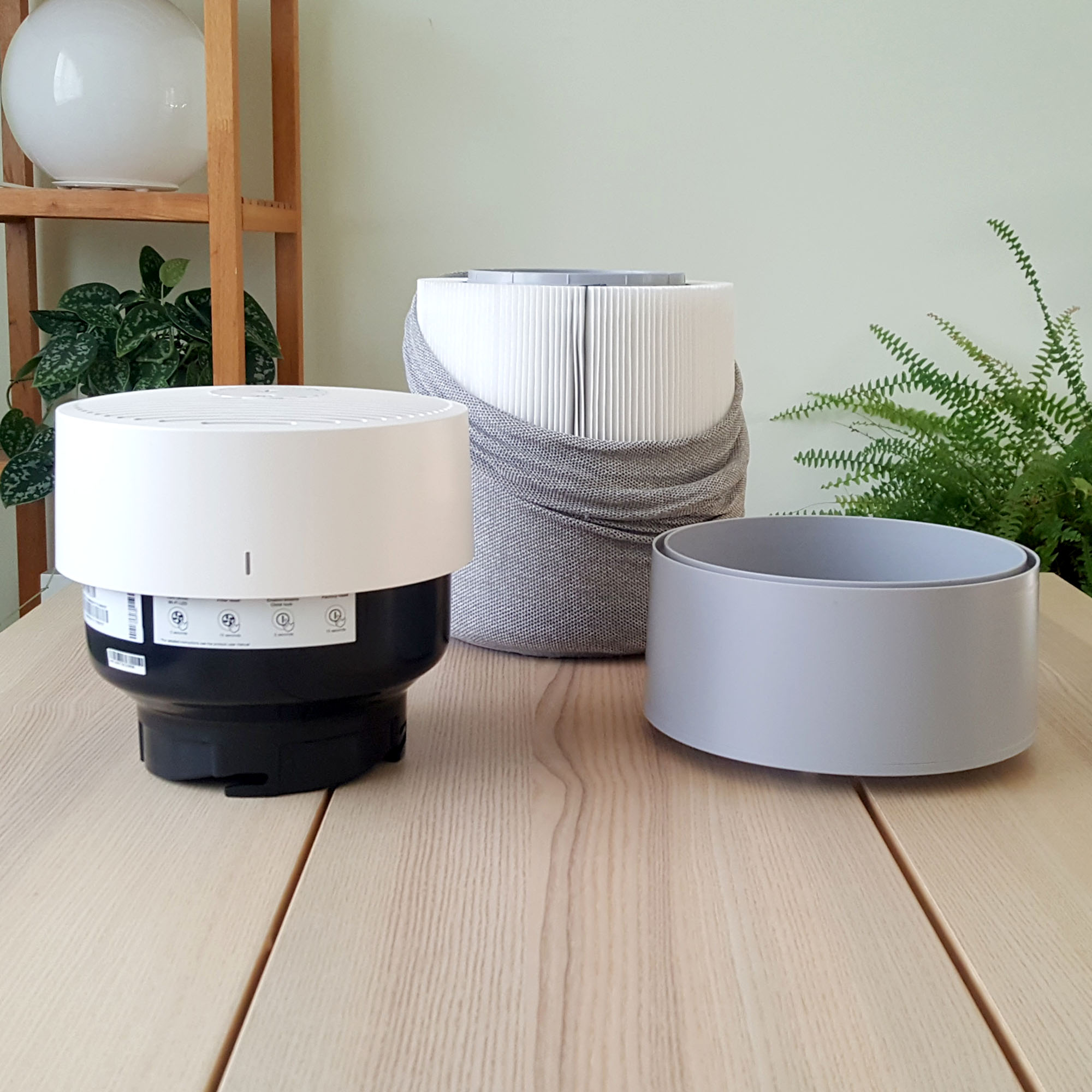
The Blue Max 3250i also features an indicator light on the front that automatically changes through five colourways to let you know the current air quality. Blue means 'excellent' air quality, green 'good', yellow 'moderate', orange 'polluted', and red 'very polluted' air quality. The coloured air quality indicator light is a really nice feature, although it would be good if the light was bit larger, as it's not that easy to see compared to some other models.
Similarly, I would also have liked the Blue Max 3250i's on-board controls on the top of the unit to be a little larger. Considering the size of the air purifier, they feel a little bit too small and could have been made easier to read.
All in all though, the design of the Blue Max 3250i looks great. The air purifier becomes something of a style statement in whatever room it's placed in, and certainly isn't an appliance you feel the need to hide away out of sight.
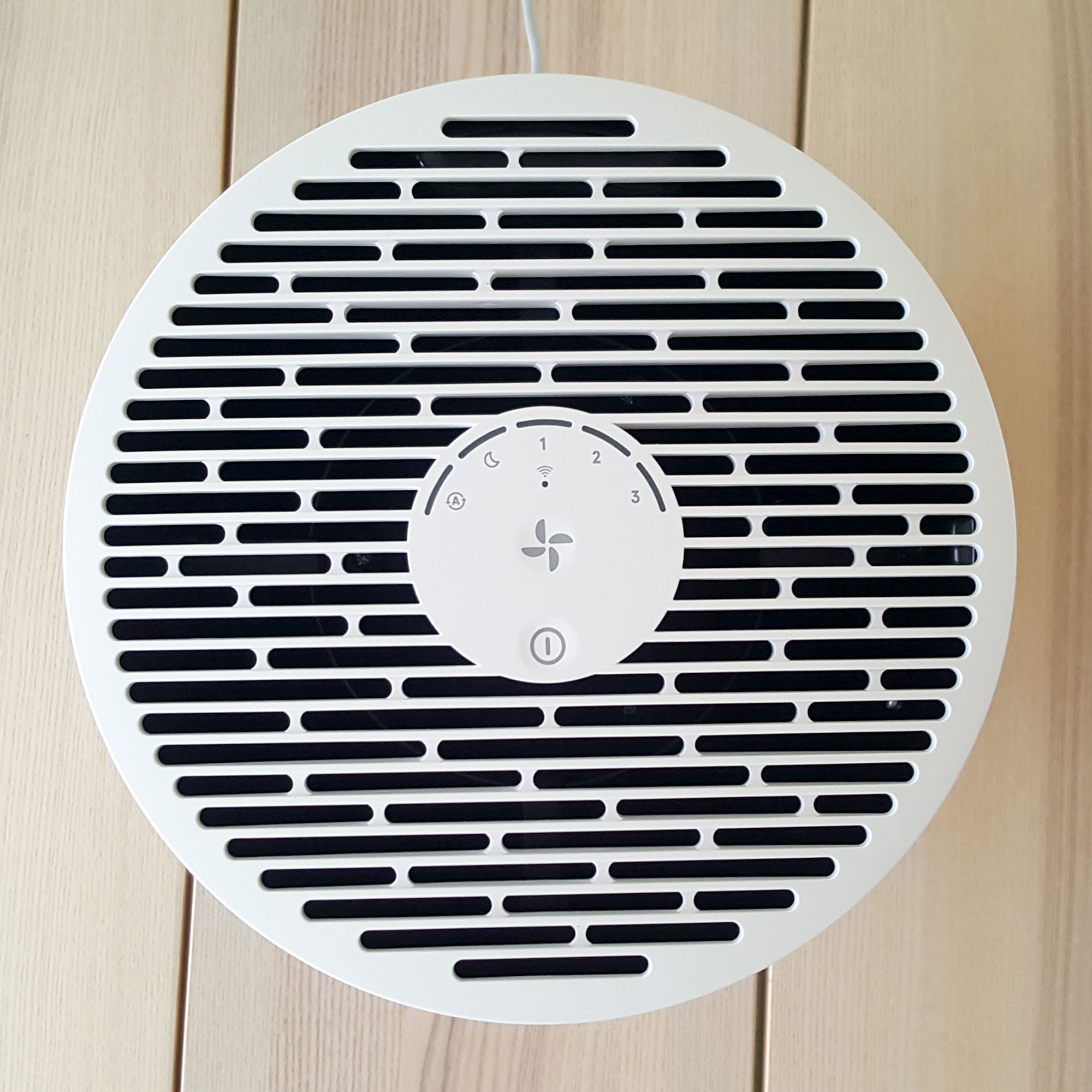
Performance
The Blueair Blue Max 3250i offers three fan speeds that you can set manually, as well as a Night mode, and a very easy-to-use Auto mode.
When the Auto setting is chosen the air purifier uses its in-built sensors to adjust the fan speed automatically based on air quality. For example, if the air quality is bad then the fan will automatically be set to high fan speed.
This is a great feature as it means you can save on energy by only using the fan speed necessary to clean the air, and this is the mode that I put the air purifier into to perform the first performance test.
I was happy to see that when I first turned the purifier on it showed a blue light on the indicator display, communicating that the indoor air quality was currently in the 'very good' range.
To test out if it could pick up on changes to the air quality, I lit a match close to the air purifier and let it burn out to create smoke in the air. In Auto mode it took the Blue Max 3250i 20 seconds to register the smoke particles and for the indicator light to change from blue to orange. That meant the purifier had registed a drop in the air quality so it automatically increased the fan speed to return air quality to 'very good'.
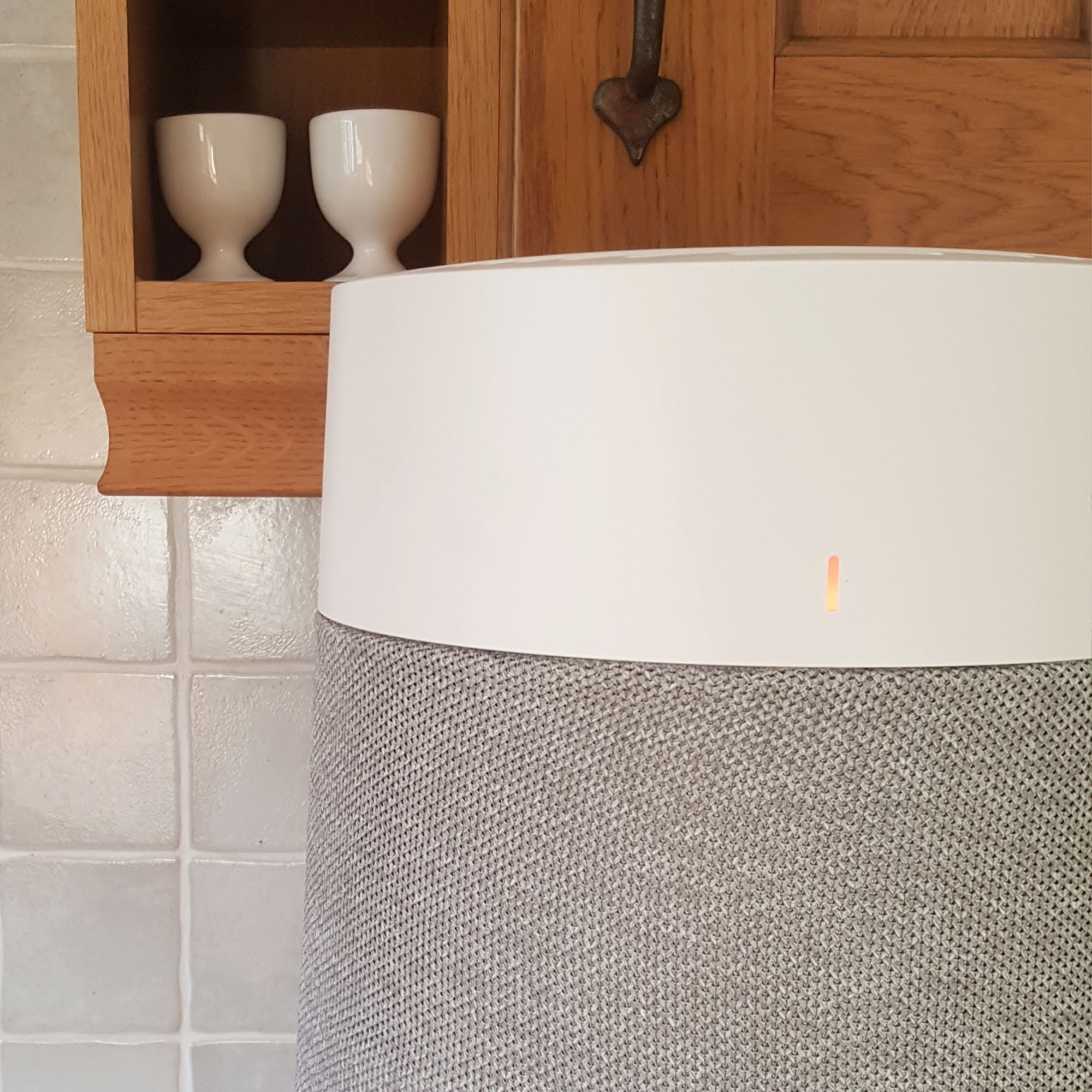
All in all it took 2 minutes and 30 seconds for the Blue Max 3250i to clear the air and return to standby mode, shifting through yellow (moderate), green (good) and then back to blue (very good) air quality.
When I left and then re-entered the room my nose couldn't pick up any trace of smoke remaining.
The same happened when I tested spraying aerosol deodrant in the vicinity of the air purifier. It took 20 seconds again for the Blue Max 3250i to register the VOCs present in the deodrant, and this time the indicator light displayed red for 'very polluted' air quality and soon got to work extracting.
This time the air purifier took 2 minutes and 16 seconds to return to standby. I still noticed a faint odour of deodrant when I re-entered the room, but the purifier had made an obvious positive improvement to the air quality, surpassing the performance of many air purifiers I put through the same test.
I also tested the Blue Max 3250i in the kitchen to see how it coped with cooking fumes. My kitchen has a very old extractor fan that struggles to adequately remove cooking fumes, so I was interested to see how the air purifier would perform in comparison.
To test out its powers I shut the kitchen door, made sure the windows were closed, left the extractor fan off and started frying two rashers of plant-based bacon whilst the Blue Max 3250i was positioned on the kitchen work surface in Auto mode a safe distance away.

From when the bacon first started sizzling, it took the Blue Max 3250i 3 minutes and 20 seconds to register the bacon smell at which point it soon shifted the fan speed up several gears as the fumes intensified.
Around a minute later the bacon had finished crisping up, so I snuck out of the kitchen, shut the door again, and set to work eating my bacon sandwich whilst the Blue Max set to work removing the bacon fumes.
All in all, it took 11 minutes and 32 seconds for the 3250i to finish doing its thing, register the air quality as back to 'very good', and and return to its lowest fan speed setting.
At this point I re-entered the kitchen to see if my nose agreed with that 'very good' air quality rating, and I was super impressed. There was barely any lingering bacon smell lurking when I stepped back inside, and any trace smell remaining was certainly far less noticeable than it would have been had I been reliant on my not-very-efficient extractor hood or an open window during the frying process – impressive stuff.

Lastly, there was the dust test to perform. Whilst the AX91-604GY was in Auto mode I emptied the contents of my vacuum cleaner onto the floor next to it. The air quality indicator remained a constant blue for 'very good' air quality throughout this process. That meant the purifier stayed on its lowest fan setting throughout rather than kicking the fan up a gear to clear the air – a bit of a surprise as I was expecting the dust particles to send the purifier into overdrive!
When I manually set the air purifier to its highest fan speed and performed the same exercise, I could clearly see the dust particles being drawn towards the air purifier, but again the indicator light didn't show a decrease in air quality.
Seeing as the Blue Max 3250i draws in air from 360°, it may be that the bulk of the air it was filtering was non-dusty and therefore overall the air quality remained high throughout the exercise. But, after it had performed so well in reacting to the smaller particulate in the air during the smoke and VOC tests I was a bit surprised it didn't register the larger particulate in the same way. However, on higher fan speeds the dust was visibily being drawn into the purifier, so it did still seem to be doing its thing!
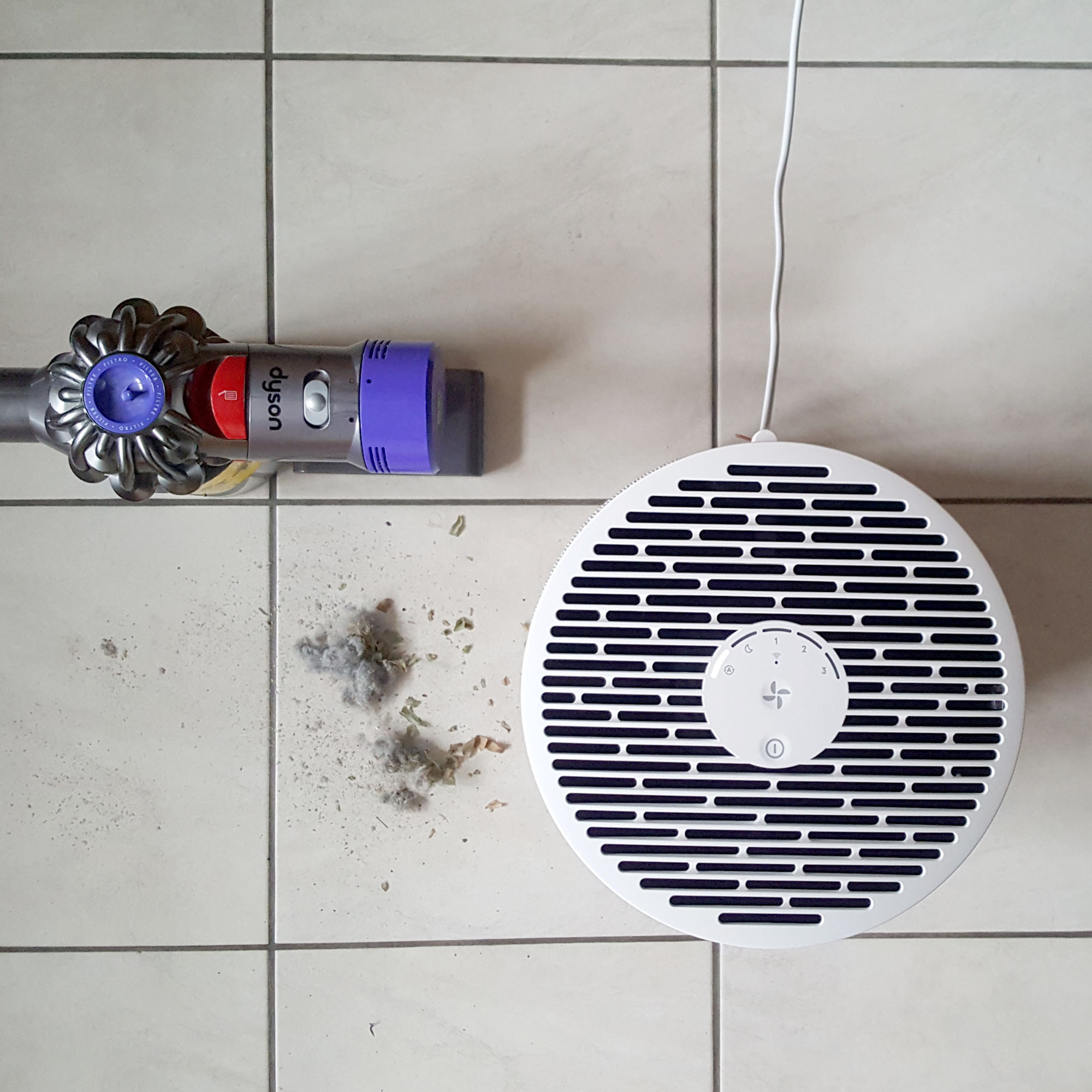
However, overall I was incredibly impressed by the Blueair Blue Max 3250i Air Purifier's performance. Especially considering this is a relatively small air purifier in the grand scheme of things.
The Blue Max 3250i has a CADR of 239 m³/h, which is on a par with the Levoit Core 300S air purifier, and far below the 620m3/h CADR of the much larger AEG AX91-604GY Connected Air Purifier I previously tested. However, in practice, I found the Blueair Blue Max 3250i more responsive to changes in air quality than either of these machines.
Perhaps that's down to the 3250i's impressive filtration, with Blueair stating the Blue Max 3250i's HEPASilentTM dual filtration technology 'can remove airborne pollutants from the air faster and more quietly than traditional HEPA filtration alone'. That means the 3250i promises to filter out 99.97% of airborne particles down to 0.1 micron in size, whereas many air purifiers only promise to capture 99.97% of 0.3 micron air pollutants. Either way, in practice, the 3250i's performance is impressive.
Ease of use
The performance of the Blueair Blue Max 3250i Air Purifier really impressed me, but sadly I was slightly less impressed by the user experience of the Blue Max 3250i's on-board controls.
Although they're simple enough – there's just one button to turn the air purifier on and off, and another to toggle through its five settings – the buttons didn't feel that nice to interact with compared to other models.
The fact you have to scroll through all five functions to get to the one that you want is also a little annoying. For example, if you're in Night mode and you want to switch the air purifier into Auto mode, you need to keep pushing the central button to scroll through fan speeds one, two, and three, before you can select Auto. Not a huge deal perhaps, but it certainly made me appreciate the more reponsive and user-friendly digital controls on models such as the Levoit Core 300S and AEG AX91-604GY Connected air purifiers.

Of course, you do also get the option of controlling the Blue Max 3250i via the Blueair App or through voice commands via Amazon Alexa or Google Assistant which cuts out the need to interact with the on-board controls at all.
The App also gives additional air quality data that you can filter by day, week or month, and features a 'Welcome Home' function that means the Blue Max 3250i switches into standby when you leave the house and will turn back on when you're getting close to home. Handy, as this air purifier doesn't otherwise have a timer function.
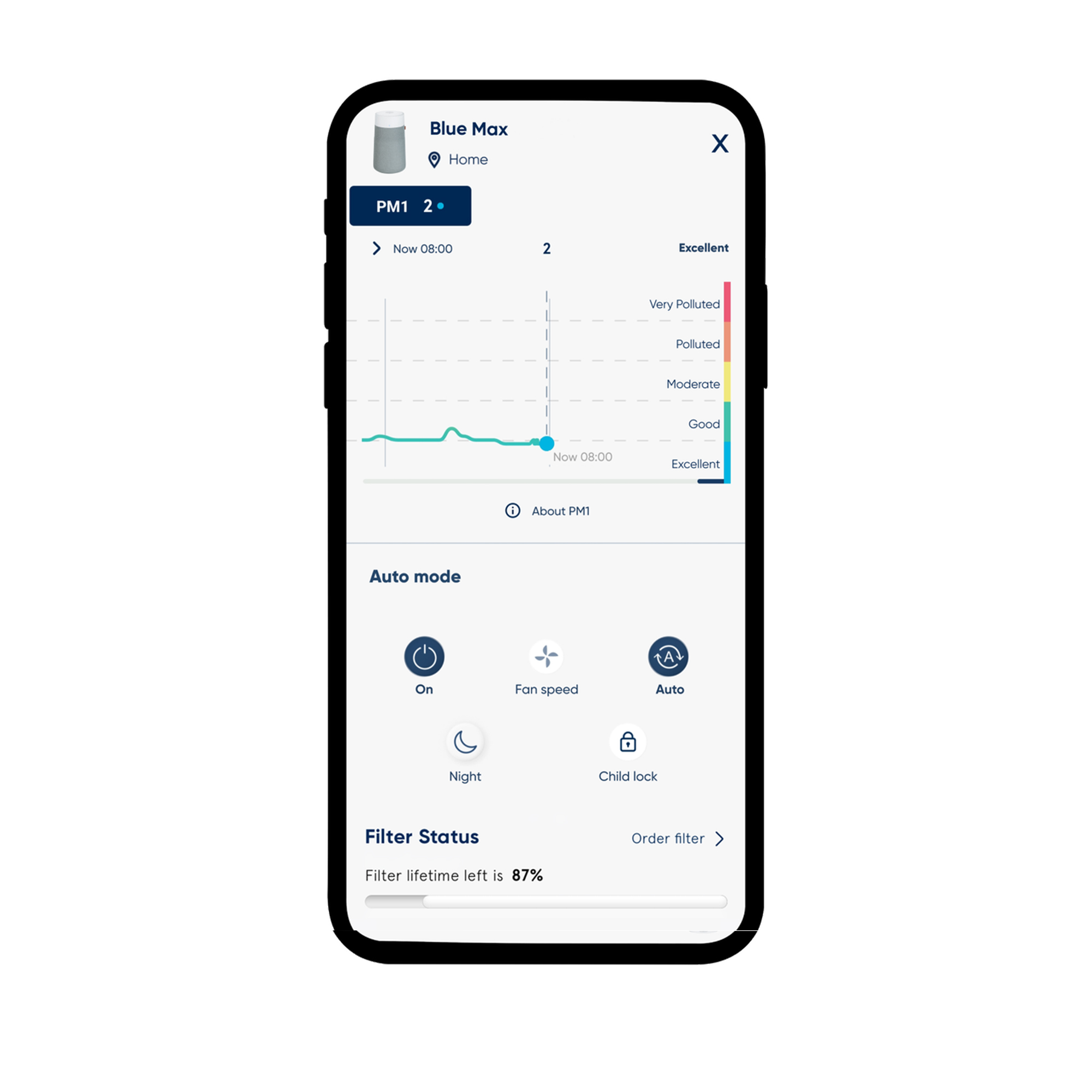
Noise levels
The Blueair Blue Max 3250i Air Purifier is very quiet, measuring between 18-46dB dependent on the fan speed you choose.
It only really gets loud when it's running in its highest fan speed, otherwise the low and middle fan speed are quiet, and the Night mode quieter still.
Night mode also dims the lights on the air purifier making it a great option for use in the bedroom overnight.

Portability
As air purifiers go, the Blueair Blue Max 3250i is pretty light and fairly compact, weighing in at 3.39kg and measuring H48 x W27 x D27cm.
That makes it easy enough to pick up and move around the home, although it does lack any hand holds, so you do need to have the ability to grip its cylindrical build with two hands. A built in carry handle would have been a nice touch.
And whilst its build isn't too sizeable, it was a bit too big to sit comfortably on most surfaces in my home, so you probably will need to place it on the floor.

Energy use
Compared to most air purifiers of this size, the Blueair Blue Max 3250i is very energy efficient using just 2.5-20W of electricity depending on which mode you have it running in.
It also features that super useful Auto mode that means you don't need to have the purifier constantly running on a high fan setting. Instead you can leave it in Auto and the air purifier will remain on its lowest setting unless it detects a drop in air quality, at which point it will swing into action at a higher gear – a great energy-saving measure.
You can find out more about how much it costs to run an air purifier in our dedicated guide.
Filter replacement
The downside of pretty much every air purifier is that beyond the initial purchase price of the purifier itself, you also need to factor in the ongoing cost of replacing the air filter every so often.
Generally manufacturers advise that an air filter should be replaced roughly every six months as it will gradually become clogged up with particulate and its efficiency therefore reduced.
Blueair advises similarly, recommending the Blue Max 3250i air filter is replaced every 6-9 months. There's a red indicator light on top of the purifier that illuminates when this is necessary. You can also view more info on the health of the air filter within the Blueair App.
The brand advises periodically cleaning the pre-filter – ingeniously this is the grey knit cover on the outside of the air purifier – using the soft brush attachment on a vacuum hose. The pre-filter can also easily be removed and washed for a deeper clean.
When you do come to replace the filter, replacement filters cost around £35 as of writing, so not too unreasonable compared to some purifiers.

Verdict
Overall, I was incredibly impressed by the Blueair Blue Max 3250i Air Purifier's performance.
So far, the Blue Max 3250i is the most responsive air purifier I've tested. In our practical tests it almost immediately sensed changes in air quality and sprang into action to remove those impurities from the air. Its Auto mode is also a brilliant addition, meaning you can rely on the built-in air quality sensor to do all the hard work of managing your homes air quality .
That Automatic mode also means the air purifier is never using more electricity than it needs to, which saves on energy usage and reduces running costs. Plus, even when the when 3250i is operating on its highest fan speeds, with energy usage of between 2.5-20W, it's still a very energy efficient choice compared to much of its competition. And, replacement air filters won't break the bank like other options can.
The air purifier's five-colour air quality indicator is another great feature, as is the fact the 3250i is Wi-Fi compatible and can be paired with the Blueair App if you want to make the most of the air purifier's Smart features, and connected to Amazon Alexa or Google Assistant if you prefer to use voice activated commands.
And, the Blueair Blue Max 3250i Air Purifier is quiet and looks super stylish to boot. I also loved the washable pre-filter which felt like it was doing a much better job at protecting the HEPA filter from getting clogged up with particulate than the design of many comparable air purifiers.
That 3-Stage filter is another real plus point of the Blue Max 3250i. The filter is large, reasonably-priced when it comes to replacement, and of impressive quality compared to similarly priced air purifiers – able to filter out 99.97% of airborne particles down to 0.1 micron in size whereas many air purifiers only promise to capture 99.97% of 0.3 micron air pollutants.
In fact, the only real niggle I had with the Blue Max 3250i is that I didn't love its on-board controls. However, although a little clumsy, they were fine to operate, and there's the option of remote control operation via the Smart App or via a voice-activated device if you prefer, another real boon for many users.
Overall, I think the only reason not to invest in this air purifier, is if you want to filter the air in a room over the Blue Max 3250i's maximum 48m2 capacity, in which case I'd recommend the more powerful AEG AX91-604GY Connected Air Purifier that's designed for use in spaces up to 129m2. Or, in contrast, if your rooms are super small, then perhaps this mid-sized air purifier might be a tad too large, in which case the Levoit Core 300S air purifier tucks more easily into a tight corner or onto a work surface.
However, in terms of performance, usability and style, it's hard to fault this well-designed air purifier. The Blueair Blue Max 3250i Air Purifier is a brilliant all-rounder at a mid-range price point, and as long as your room sizes aren't larger than its 48m2 capacity, this is definitely the air purifier I would choose to invest in.

For my small kitchen, where I struggle to extract cooking fumes with the existing built-in extractor fan, it certainly improved the air quality considerably, and its relatively compact size means that if you're short on floor space you can pop it onto the countertop to do its thing. Plus, the Auto mode means you don't have to use more energy than you need to, just switch it on and it will kick into high gear when cooking fumes start to build up, and only continue to run until they're cleared. In fact, if only it could help with the washing up as well, it would be the perfect kitchen companion.

Amy is Ideal Home’s Sleep Editor and the Ideal Home Certified Expert on Sleep. She's spent the last four years researching and writing about what makes for the best night’s sleep during the day and testing out sleep products to find the best-in-class by night. So far she’s clocked up over 10,000 hours of pillow, duvet, and mattress testing experience.
Our go-to for all things sleep-related, she’s slept on and under bestselling products from Simba, Emma, Hypnos, Tempur, Silentnight, Panda, and many many more.
As a hot sleeper, Amy is always on the lookout for the most breathable bedding, but she also leads a wider team of testers to ensure our product testing encompasses both hot sleepers, cold sleepers, front sleepers, back sleepers, side sleepers, and everything in-between.